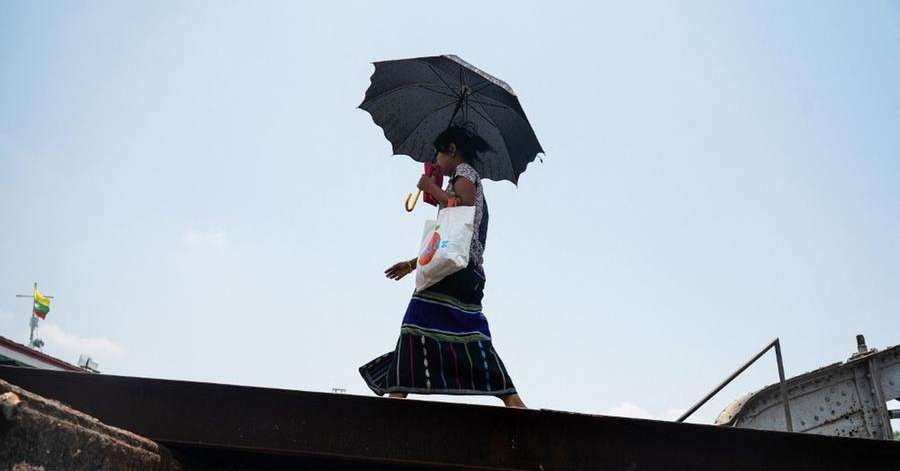Large swaths of South and Southeast Asia are facing a heatwave that has caused record temperatures in countries such as the Philippines and Myanmar and left millions of children out of school. This phenomenon can continue for days and even weeks, with temperatures expected to exceed 40 degrees Celsius in several countries such as Cambodia, Myanmar, Vietnam, India and Bangladesh, and “severe” weather conditions in Thailand. The months leading up to the monsoon and rainy season on this continent are generally hot, but temperatures this year were well above average in many countries.
Experts attribute this in part to climate change, which is making heat waves more frequent, longer and more intense, and is having a stronger impact on Asia, which is warming faster than the global average, according to the World Meteorological Organization.
Milton Spear, a meteorologist and researcher at the University of Technology in Sydney, told AFP that the influence of the El Niño weather phenomenon must be added to this. “The absence of clouds due to El Niño means that temperatures are likely to be warmer on average,” he says.
At sea surface, temperatures are already several degrees above normal, “helping to keep them above average inland at night” and “intensifying from a higher base” during the day.
Other factors also play a role, such as deforestation in affected areas, which reduces shade and increases the dryness of surfaces, and urbanization, where concrete, glass and steel structures absorb heat rather than reflect it.
Heat stress in children
Extreme heat affects more children, older people, and people with pre-existing diseases. Moreover, it affects the most disadvantaged classes, as there are no solutions to cool their homes and they are often forced to work without adequate thermal protection conditions. UNICEF has warned that 243 million children in the Pacific and East Asia are at risk from heat waves.
“Children’s exposure to heat waves causes heat stress,” explains Salwa Al-Eryani, a health expert at the UNICEF regional office. .
In the face of these risks, authorities in many countries have asked their citizens to stay in their homes. Nepal has put its hospitals on alert and Cambodia has asked its schools to keep doors and windows open for ventilation. The Philippines and Bangladesh went further and decided to close schools for several days.
However, due to the lack of air conditioning or proper construction methods, many children do not benefit from cooler temperatures at home than they would if they had gone to school, says UNICEF's Al-Eryani. High temperatures may continue in the region for some time.
In Bangladesh, the rain is not expected to stop before Thursday, and in Thailand, the annual rains are expected to fall only after the end of May, that is, weeks later than usual. Even with the arrival of the monsoon, the overall warming trend will continue, Milton Speer predicts.
“Heatwaves will continue to occur more frequently as the oceans and atmosphere gradually warm due to a warming climate,” says the meteorologist, who also forecasts risks to crops and livestock.
Therefore, this expert highlights the importance of adapting to this warmer climate and offering, for example, “sustainable structures with air conditioning in neighborhoods, where people can go during the day and sleep at night.”

“Music fanatic. Professional problem solver. Reader. Award-winning tv ninja.”

![[VÍDEO] Elton John’s final show in the UK has the crowd moving](https://www.tupi.fm/wp-content/uploads/2023/06/Elton-John-1-690x600.jpg)




More Stories
A South African YouTuber is bitten by a green mamba and dies after spending a month in a coma
A reptile expert dies after a snake bite
Maduro recalls his ambassador to Brazil in a move to disavow him and expand the crisis